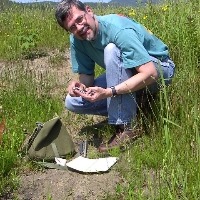Before moving to a new town, Ginger was a social butterfly. The little pitbull puppy had a group of friends to play with at the dog park and loved going out and meeting new dogs.
For Ginger, another dog was just another opportunity to make a best friend.
Chloe, on the other hand, was the opposite. The 11-year-old pitbull was rescued from a shelter and had never been socialized with other dogs. Chloe lived with her owner, Cherelle, and it was just the two of them. That is, until Ginger moved in next door.

In an interview with The Dodo, Ginger’s mom, Kassidi, explained that Ginger wasn’t doing very well after moving into their new neighborhood. She was used to being a socialite, but she didn’t have any friends in the new town.
But one day, Ginger spotted her neighbor: Chloe. Ginger was so excited to go meet a new dog, but Cherelle wasn’t sure how Chloe would do meeting a puppy.
The two dog moms decided to give it a go and get their dogs together anyway. However, when Chloe first met Ginger, she didn’t like her much. Chloe even tried to snap at the friendly pup!

Cherelle said that she didn’t expect Kassidi to want Chloe over again, but Kassidi said she understood that Chloe was older and would need to get used to Ginger. She wanted to try a meeting again, so they did!
Their second meeting went a lot better, and the two really hit it off! They had a blast chasing each other around the backyard.

“I don’t think [Ginger] started to perk up and be herself again until she met Chloe,” Kassidi said in an interview with The Dodo.
Ginger is Chloe’s first friend, and the two couldn’t be happier together.

I am broadly interested in how human activities influence the ability of wildlife to persist in the modified environments that we create.
Specifically, my research investigates how the configuration and composition of landscapes influence the movement and population dynamics of forest birds. Both natural and human-derived fragmenting of habitat can influence where birds settle, how they access the resources they need to survive and reproduce, and these factors in turn affect population demographics. Most recently, I have been studying the ability of individuals to move through and utilize forested areas which have been modified through timber harvest as they seek out resources for the breeding and postfledging phases. As well I am working in collaboration with Parks Canada scientists to examine in the influence of high density moose populations on forest bird communities in Gros Morne National Park. Many of my projects are conducted in collaboration or consultation with representatives of industry and government agencies, seeking to improve the management and sustainability of natural resource extraction.











